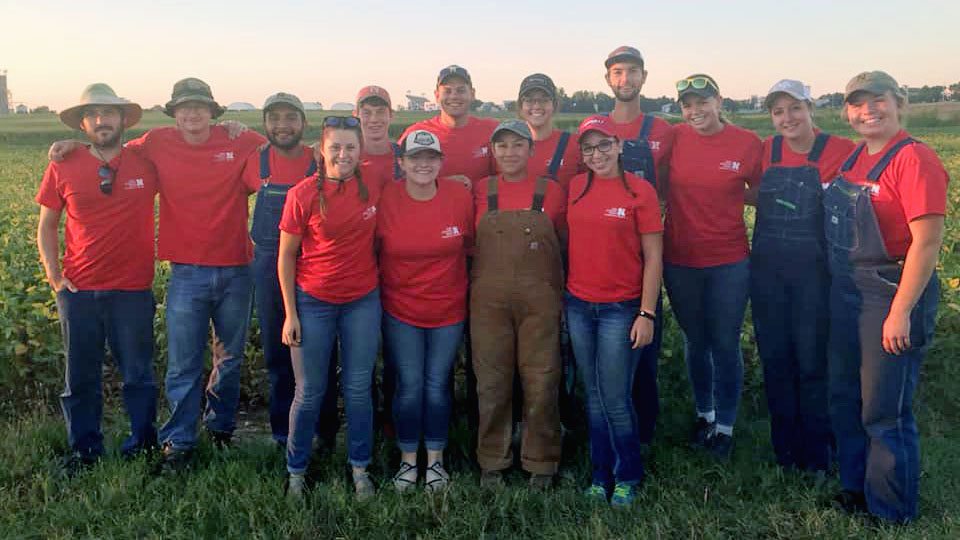
The University of Nebraska-Lincoln Soil Judging Team dug right into the Region 5 Soil Judging Competition from Sept. 17 to 21 in Manhattan, Kansas, walking out covered in grit and quite a bit of glory, having beaten seven other teams for a first-place overall win, three individual awards and a third-place team finish.
The win puts the team, made up of 14 students from the School of Natural Resources and the Agronomy and Horticulture Department, in a top position for the 2019 National Soil Judging Contest set for spring in California.
Samantha Teten, senior agronomy and horticulture student, earned first place in the individual competition, beating nearly 65 others, including her own teammates and those from Iowa State University, Kansas State University, University of Minnesota, South Dakota State University and University of Missouri.
“Most people don't understand how soil judging can be a competition or why anyone would want to spend a week climbing in and out of trenches, with their hands caked in clay, and braving all weather conditions, but there isn't a better week in the semester,” she said. “This team has taught me things that can't be illustrated in a classroom, helped me narrow my career path, and given me some of my best friends. Our coaches have worked really hard, and it is a demonstration of their investment when six students placed in the top 20 and our team getting first place overall two years in a row.”
Kolby Grint, senior agronomy and horticulture student, and Bryan Petersen, junior applied climate major in the SNR, placed third and fifth respectively in the individual competition.
“Placing in the top five in the past two years was something that I never expected I could accomplish, and I am excited for the team for winning the regional contest two years in a row,” Petersen said. “Everyone on the team competed very well, and I hope that will translate in the national competition in California.”
The teammates had three days to prepare for the competition, utilizing practice pits near the competition site to become familiar with the soils and landscape of Kansas. On competition day, they had to correctly identify, evaluate, classify and describe five soil profiles in previously unseen soil pits and also rate the area for land use.
“This year, Becky (Young) and I tried to focus our coaching on guiding the students to understand the ‘big picture’ component of soil judging,” said Judy Turk, co-coach and pedologist with the Conservation and Survey Division at SNR. “The best soil judgers are not just careful observers in the soil pit, they also know how to put together the big picture and understand why the soil in one position on the landscape is different from the soil in another position.”
“Carefully describing the soil is like listening to the soil tell you its life story, which may be thousands or even millions of years long,” she added. “Students in soil judging gain the skills that they need to listen and understand what the soil is telling them.”
In a purely practical sense, the students are learning to interpret what the soil can and can’t be used for, said Young, co-coach and soil scientist with the Agronomy and Horticulture Department, but based on their backgrounds and their careers interests, they see soils differently. This leads them to good conversations and teachable moments — from each other.
“I can't think of another experience I have been a part of in my undergraduate career that students from completely different backgrounds quickly overcome their differences and realize each other’s strengths,” Grint said. “It's such a unique experience from which I've been able to build personal relationships that wouldn't have been possible without our team leadership and appreciation of Earth's greatest resource: soil.”
Thanks to the soil, two engaged coaches, 14 student sponges and support from the College of Agriculture Science and Natural Resources, SNR and AgroHort, the students earned Nebraska’s third first-place trophy in history of the award, started in 1983.
And for that, we say, “Congratulations!”
Shawna Richter-Ryerson, Natural Resources